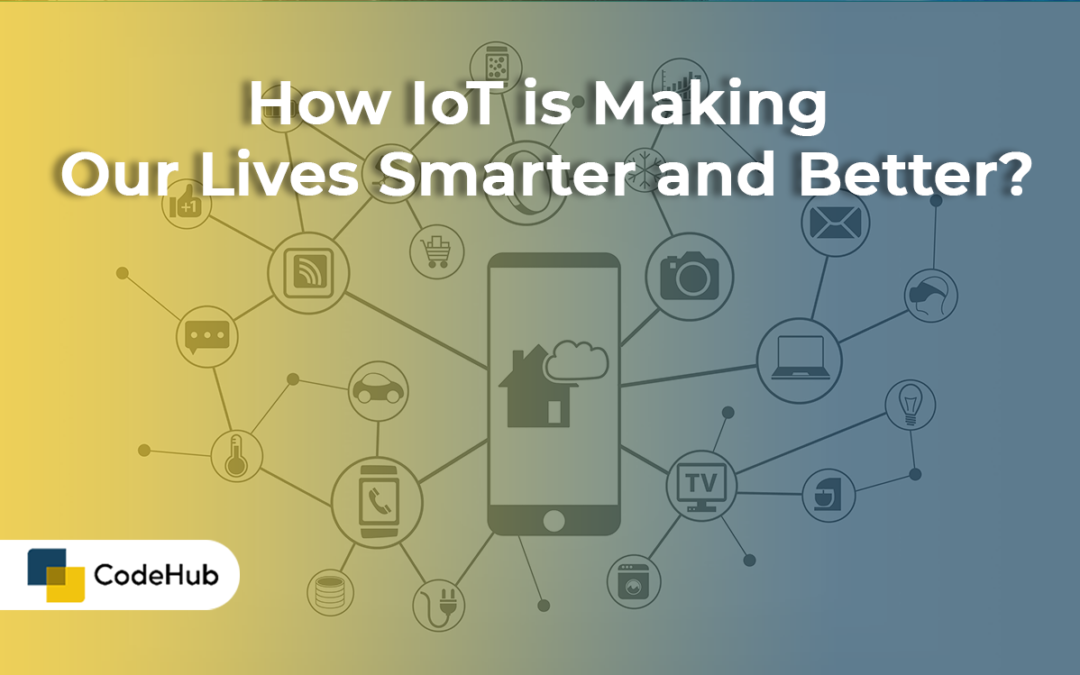The Internet of Things (IoT) is a revolutionary approach for future technology that connects everyday objects to the internet and allows them to communicate with each other. IoT has the potential to improve our lives in many ways, from making our cities more efficient and sustainable, to enhancing our health and well-being, to creating new opportunities for innovation and business. Here are some examples of how IoT is changing our lives for the better.
Smarter Cities
IoT can help cities become smarter by optimizing their resources, reducing their environmental impact, and improving their services for citizens. For instance, IoT can enable smart water management, smart lighting, smart waste collection, smart transportation, smart parking, and smart security. These solutions can save energy, water, time, and money, as well as improve the quality of life for urban dwellers.
One example of a smart city is Barcelona, which has implemented a citywide WiFi and information network linked to sensors, software, and a data analytics platform. This network has enabled the city to provide smart water technology, automated street lighting, remote-controlled irrigation for parks and fountains, “on-demand” waste pickups, digital bus routes, and smart parking meters. These IoT-enabled urban services have dramatically reduced traffic jams and pollution, as well as water, light, and energy usage.
Another example is Songdo, a new city built from scratch in South Korea. Songdo’s networks are designed to ensure its buildings, transportation system, and infrastructure are as efficient as possible. The city also features smart homes that allow residents to control their appliances, lighting, heating, and security remotely via their smartphones.
Cleaner Air and Water
IoT can also help cities improve public health by monitoring and reducing air and water pollution. Dirty air and water led to a staggering 9 million deaths in 2015 alone, according to a recent study. IoT can help prevent such deaths by providing real-time data on the quality of air and water in different locations, as well as alerting authorities and citizens about potential hazards.
For example, Chicago is testing a city-wide network of sensors called the “Array of Things”. The sensors serve as a sort of fitness tracker for the city, collecting data on air quality, climate, traffic, and other metrics. The data can help researchers, policymakers, and citizens understand the environmental conditions of the city and take actions to improve them.
Another example is LoRaWAN (Long Range Wide Area Network), a low-power wireless network that can connect sensors over long distances. LoRaWAN can be used to monitor water quality in remote areas where conventional networks are not available or affordable. For instance, LoRaWAN has been used to monitor the water quality of Lake Victoria in Africa, which is the source of drinking water for millions of people.
Healthier Lifestyles
IoT can also help us improve our health and well-being by providing us with personalized feedback and guidance on our fitness, nutrition, sleep, stress, and mental health. IoT can enable wearable devices that track our vital signs, activity levels, calories burned, sleep patterns, and mood. These devices can also connect to apps that analyze our data and provide us with recommendations on how to improve our health.
One example of a wearable device is Fitbit, which is a popular fitness tracker that can measure steps taken, distance traveled, heart rate, calories burned, sleep quality, and more. Fitbit can also sync with other apps that can help users set goals, track their progress, and join online communities for support and motivation.
Another example is Muse, which is a headband that can measure brain activity and provide feedback on meditation sessions. Muse can help users reduce stress, improve focus, and enhance their mental well-being.
New Opportunities
IoT can also create new opportunities for innovation and business by enabling new products, services, and business models that leverage the power of data and connectivity. IoT can open up new markets, increase efficiency, reduce costs, and enhance customer satisfaction and loyalty.
One example of a new product is Nest, which is a smart thermostat that can learn from users’ behavior and preferences and adjust the temperature accordingly. Nest can also be controlled remotely via smartphone and can save energy and money by reducing heating and cooling costs.
Another example is Uber, which is a ride-sharing service that connects drivers and passengers via smartphone app. Uber uses IoT to locate drivers and passengers, calculate fares, process payments, and provide feedback. Uber has disrupted the traditional taxi industry by offering convenience, affordability, and transparency.
Conclusion
IoT is a game-changer for our society and our planet. It has the potential to make our lives smarter and better by improving our cities, our environment, our health, and our opportunities. IoT is not just a technology, but a vision for a better future.

